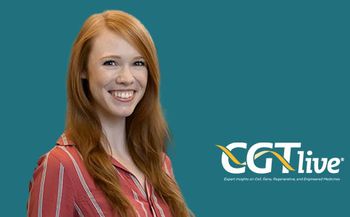
Future Trends for Genomic Medicines
David Barrett, JD, the chief executive officer of ASGCT, discussed likely future trends extrapolated from the organization’s Q3 Landscape Report.
This is the second part of an interview with David Barrett, JD. For the first part,
The latest quarterly “Gene, Cell, & RNA Therapy Landscape Report” put out by the American Society of Gene & Cell Therapy (ASGCT) has indicated that the field is steadily growing and will likely to continue to grow for the foreseeable future. Following the publication of the report, CGTLive® got in touch with David Barrett, JD, the chief executive officer of the American Society of Gene & Cell Therapy (ASGCT), to get his view on the big-picture implications of the trends illustrated in the Report for the healthcare community.
Barrett emphasized that going forward, more and more doctors and caregivers will tend to care for patients who have received a gene or cell therapy at some point. He also touched on the growing diversification of gene editing approaches.
CGTLive: How would you summarize the big-picture implications that doctors and the broader healthcare community should take away from the report?
David Barrett, JD: The the big picture takeaway is that despite some changes in the investment landscape, where we have seen some some dips and some rebounds, the the number of cell and gene therapies that are coming to market continues to increase. This is now and will continue to be an option for many patients moving forward. For caregivers who are working with patients and delivering gene therapies now, we'll continue to see new therapeutics approved in the not too distant future. For those who are not following patients or treating patients right now that have had a gene therapy, we'll continue to see the number of patients who have received a gene therapy increase. We're looking forward to being able to provide education, training, and awareness to physicians so they know how to follow patients who have had a gene therapy, whether it's for the indications that those physicians are following them for, or if it's for other indications, being aware that this is a growing therapeutic option for many diseases in many patients.
Is there anything else you want to share?
One thing that maybe isn't as clear in the report because of the availability of data that is collected there—so this is a bit more anecdotal—but what we are seeing, even anecdotally, is an increase in the total number of programs that are leveraging gene editing in order to provide a therapeutic benefit. There are new types of gene editing that are coming into the clinic now and we'll continue to see this trend for many years into the future. It is our hope that these new techniques will continue to build on the learnings that we've had in other forms of gene therapy and hopefully provide an even safer and more effective therapeutic benefit for literally thousands of diseases in the future.
This transcript has been edited for clarity.
REFERENCE
1. Gene, Cell, & RNA Therapy Landscape Report, Q3 2024 Quarterly Data Report. Presentation. ASGCT and Citeline. Accessed November 19, 2024. https://www.asgct.org/global/documents/asgct-citeline-q3-2024-report.aspx
Newsletter
Stay at the forefront of cutting-edge science with CGT—your direct line to expert insights, breakthrough data, and real-time coverage of the latest advancements in cell and gene therapy.

















































